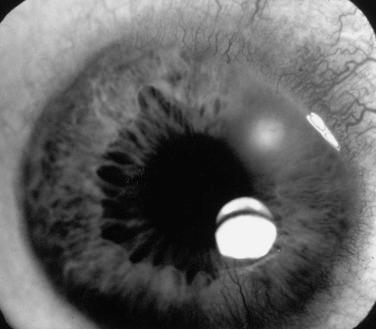Physical Address
304 North Cardinal St.
Dorchester Center, MA 02124
A 5-year-old girl with no prior ophthalmic history has a thyroglossal duct cyst excision under general anesthesia. On awakening, she complains that “something hurts in my eye.” Although there is no obvious foreign body in the eye, excessive tearing is noted. Her eyes had been taped closed after tracheal intubation. Corneal abrasion is suspected, and an ophthalmology consultation is obtained.
Special appreciation is extended to Dr. Monte D. Mills, chairman of the Department of Ophthalmology, Children’s Hospital of Philadelphia and the University of Pennsylvania, for reviewing and improving this chapter.
For nonocular surgery, the incidence of anesthesia-related eye injury is estimated at 0.06%; this accounts for 3% of the American Society of Anesthesiologists (ASA) nondental closed claims cases. Risk factors for perioperative ocular injury include general anesthesia, long procedures, head and neck procedures, and lateral positioning. For ocular surgery, anesthesia-related eye injury is exceedingly rare. When it occurs, it may be related to perioperative coughing or severe postoperative vomiting, with a related sudden increase in intraocular pressure (IOP). Important ophthalmic complications and issues relevant to pediatric anesthesia include corneal abrasion, postoperative visual loss, retinopathy of prematurity, penetrating ocular trauma, oculocardiac reflex, and postoperative nausea and vomiting. The last occurs in 40% to 90% of children after strabismus surgery.
Corneal abrasion is the most common perioperative ophthalmic complication, with an incidence of 0.1% to 44%. A higher incidence was reported in the 1970s for anesthetized patients without eye protection or lubrication. Most corneal abrasions result from corneal drying associated with lagophthalmos during general anesthesia.
Symptoms of corneal abrasion include photophobia, pain, and foreign body sensation. Excessive tearing and miosis are characteristic physical findings. Staining with fluorescein reveals the abraded zone in green under a cobalt blue light ( Fig. 196.1 ).

Although the inciting event for corneal abrasion is not always clear, factors such as prone or lateral positioning and exophthalmos place patients at higher risk. General anesthesia increases the risk, in part owing to lost protective corneal reflexes, abolished Bell’s phenomenon (in which the globe turns upward during sleep), and diminished tear production and stability.
The majority of children sustaining intraoperative corneal abrasion have a full recovery within 24 hours with appropriate treatment. Extensive injury or delayed treatment results in a 16% incidence of permanent injury. Permanent scarring is usually related to secondary corneal infection or abrasions that are chronic.
Patients with corneal abrasion should be evaluated by an ophthalmologist to document the extent of injury and initiate treatment. Usual recommendations include lubrication, application of a topical antibiotic or cycloplegic agent (or both), and patch closure.
To prevent corneal abrasion, ocular contact with masks, stethoscopes, name tags, intubation equipment, sheets, and padding material must be avoided. Eye protection should be established early, before laryngoscopy. Tape should be used to keep the eyelids closed, with ophthalmic lubricants used for longer procedures. Petroleum-based ophthalmic ointments are more likely to cause foreign body sensation and blurred vision postoperatively than are aqueous solutions. Placement of a disposable pulse oximeter probe on the child’s ring finger as opposed to the index finger may lessen the chance of inadvertent eye contact and potential corneal injury in the postoperative period.
Postoperative visual loss (POVL) is the most catastrophic perioperative ophthalmic complication and may manifest as either partial visual field loss or total blindness. The incidence of POVL in the general, nonocular surgical population is 1 in 61,000 to 1 in 125,000, but after spinal surgery in the prone position, it is estimated to be 1 in 1100. There is also a higher relative incidence after open heart and head and neck surgeries. From the inception of the ASA Postoperative Visual Loss Registry in July 1999 until July 2004, there were three reported pediatric cases of POVL in patients ranging in age from 5 to 18 years.
Visual changes may be appreciated in the immediate postoperative period, but delays in diagnosis may occur when such changes are incorrectly attributed to “normal recovery” after anesthesia and instilled ophthalmic lubricants. In one study of 28 POVL cases, visual changes were recognized in 50% of patients in the recovery room and in 80% by postoperative day 2. Some patients initially had normal vision but experienced symptoms 1 to 12 days later. Younger pediatric patients may have difficulty expressing symptoms. When there is local ecchymosis around the affected eye or periorbital numbness, compression injury should be suspected.
Become a Clinical Tree membership for Full access and enjoy Unlimited articles
If you are a member. Log in here